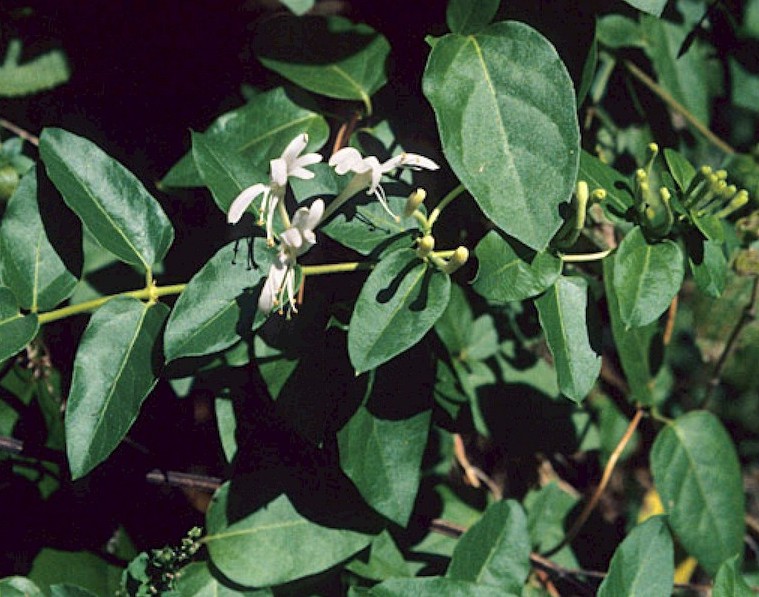The Most Damaging Invasive Plants in the U.S.

By Evelyn Long
When deciding what to plant, landscapers must be sure they don’t incorporate invasive species, as they can pose a threat to the surrounding natural ecosystem. Many of the plants that are now considered invasive have escaped from past gardens and landscapes, and even though they look beautiful in a flowerbed or backyard, it’s best to steer clear of them.
An invasive plant is alien or non-native to the ecosystem. They will spread when introduced to a region because they have little competition. If things get out of hand, they will likely cause economic, environmental and health damage.
Here are some reasons why invasive plants are thriving in almost any climate or region:
- They produce many seeds in a short amount of time, making them easy to spread.
- Invasives thrive on any soil, even if it is disturbed.
- Some non-native plants can produce chemicals that prevent other plants from growing near them.
- Root systems on invasive species can stretch far and wide, preventing natives from spreading.
- The seeds are distributed by various means, such as animals, wind and even human contact.
- The root systems also grow densely, meaning they overtake others around them.
The impact of invasive species makes it difficult to grow any native plants, and invasive plants often hard to get rid of. These efforts can include everything from chemical management to the use of full-scale land management equipment to pull up woody plantlife.
Invasives decrease recreational opportunities, increase soil erosion, degrade wildlife habitats and lessen water quality, which is why landscapers should avoid them at all costs.
The following some of the most damaging invasive plants in the United States.
1. English ivy
The spread of English ivy began back in the 1700s when European colonists began to arrive in America. They brought this plant with them because it’s easy to grow and it provides a green groundcover.
English ivy is one of the worst plants for landscaping. It quickly spreads in any condition, and it will grow on the sides of homes, as well as trees. Once it does, it slowly kills them because it restricts sunlight.
2. Chinese wisteria
Chinese wisteria is a popular choice for many home gardens and landscaping. However, despite its beauty, it is an invasive species. It’s a flowering vine that has proliferated in the eastern U.S. because of the similar climate in China. This plant can displace native species. Like English ivy, Chinese wisteria can kill large trees, so avoid planting this in landscaping.
3. Japanese honeysuckle
Japanese honeysuckle has very few enemies in North America. Initially, people brought the plant to America because of its erosion control and ornamental use. It’s another type of aggressive vine.
The invasive plant can completely smother out any other vegetation by tightly wrapping itself around stems and trunks and growing thick roots. It produces an attractive berry for birds, so they eat the fruit and spread the honeysuckle.
4. Bradford pear
Bradford pear trees may produce beautiful white flowers in the springtime, but they are an invasive species that should be avoided in landscaping. It’s a common plant in many regions of the eastern United States.
These trees can form long rows along roadsides and in old fields. They choke out native species in many natural areas and parks. Garden centers commonly sell them, but they should not be planted.
5. Norway maple
Another popular landscaping tree is the Norway maple. It is invasive, though, and it can spread into woodlands even if it stays in a backyard landscape. The native tree that it outcompetes is the sugar maple.
Norway maples make it difficult for wildflowers to grow because they can form a dense canopy that blocks sunlight. It’s vital to be aware of the differences between sugar maples and Norway maples so they can be avoided.
6. Japanese barberry
Like many other invasive plants, the Japanese barberry came to the United States as a decorative plant. It escaped from the confines of a yard, and has spread throughout forests all across America. Japanese barberry crowds out native plants, and is the perfect home for the black-legged tick, which carries Lyme disease.
Remove any barberry on a commercial or residential property. Younger plants can be pulled up by hand, but established ones require professional landscaping equipment.
Preventing invasive species from taking root
Landscapers should be educated on invasive species to avoid using them for client projects. However, another crucial prevention aspect is preventing unwanted plantlife from taking root by chance. For gardens and yards, recycled wood chips and other mulches can guard against stray seeds that may start pollinating in welcoming soil.
More generally, be wary of transporting invasive species via lumber and other materials that can hide determined plants and insects. It’s accidental transportation that often allows invasive species to spread in a new environment.
Choose native plants instead
Native plants are the best option for any landscaping. They’re already adapted to the region’s soil, climate and any other weather conditions, making them a lasting choice that is sure to look great in any yard.
Plus, they’re pollinator-friendly, low maintenance, and they help maintain native biodiversity. When possible, choose natives for public or private landscapes to ensure the long-term health and success of landscaping site.
Evelyn Long is a writer and editor focused on home building and construction. She is the co-founder of Renovated, a web magazine for the home industry.



